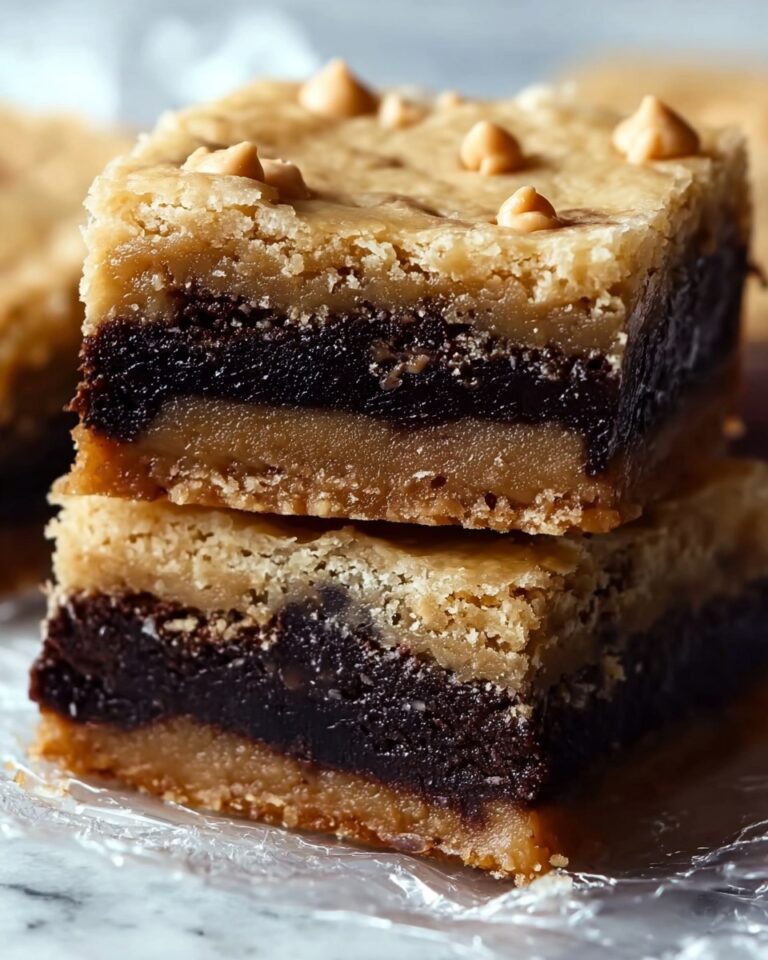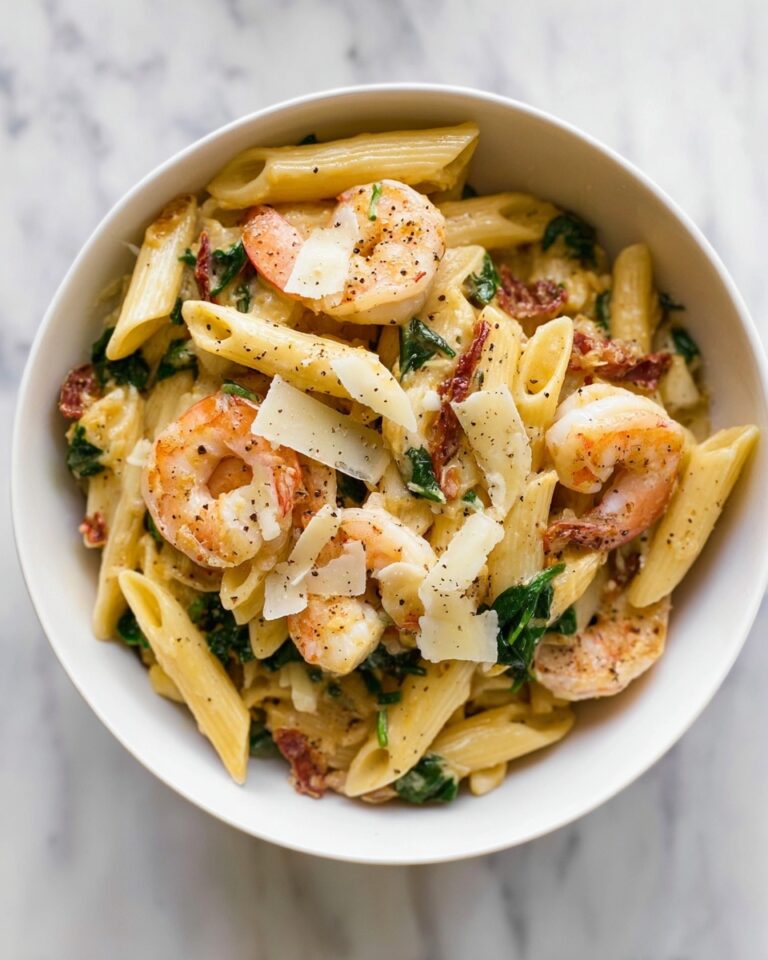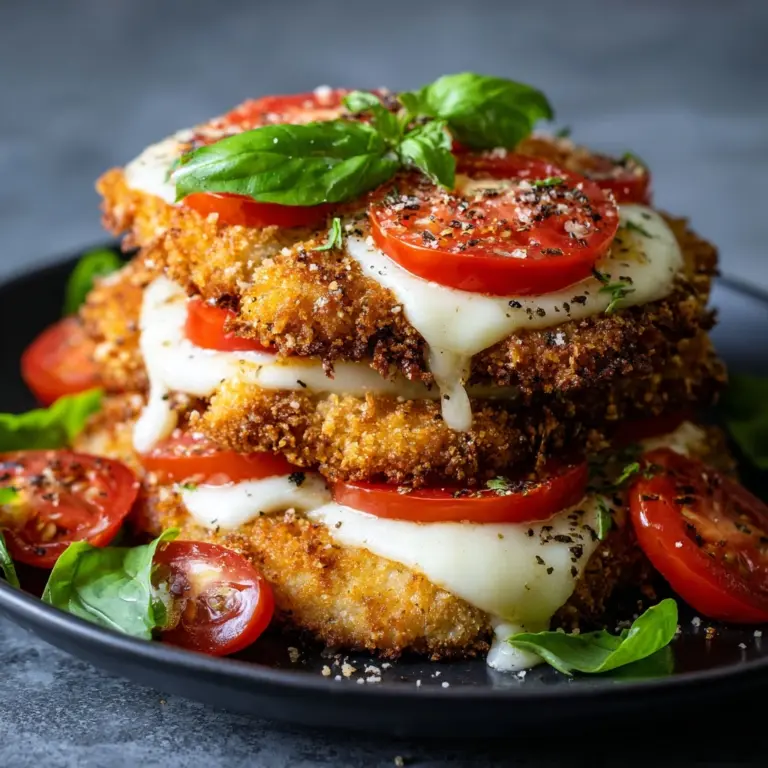If you have ever dreamed of making bakery-quality bread in your own kitchen, this Crusty French Bread Recipe is the answer to your cravings. Crispy on the outside and tender on the inside, this loaf brings that unmistakable rustic charm and complex flavor that only real French bread can offer. It’s surprisingly easy to make with simple ingredients and patient hands guiding the dough from start to finish, delivering an irresistible crust and a soft, airy crumb that’s perfect for sandwiches, soups, or simply enjoying with butter.
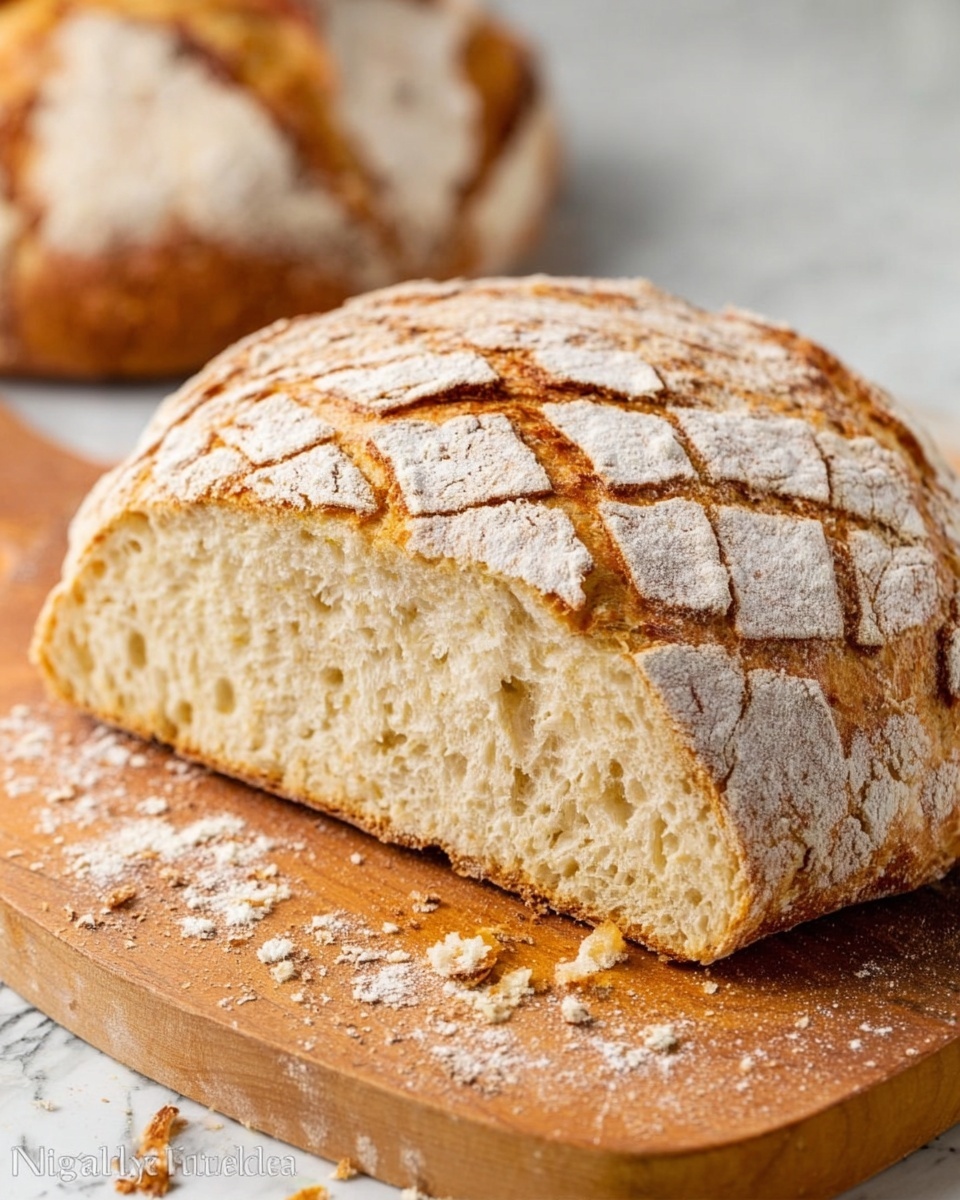
Ingredients You’ll Need
The magic behind this Crusty French Bread Recipe lies in its thoughtfully chosen ingredients. Each one plays a critical role in creating that perfect texture and flavor, yet all are simple pantry staples you might already have on hand.
- Warm water (1 3/4 cups): Activates yeast and hydrates the dough for an elastic texture.
- Molasses (1/2 tsp): Adds a subtle sweetness and helps with crust color.
- Unbleached bread flour (2 1/3 cups): Provides the strength and chewiness essential for the bread’s structure.
- Unbleached all-purpose flour (2 1/2 cups): Balances the dough’s texture, making it tender yet sturdy.
- Instant yeast (1 1/4 tsp): Ensures a reliable rise and light crumb.
- Fine sea salt (2 tsp): Sharpens the flavor and controls fermentation.
- All-purpose flour and semolina flour: Used for dusting, the semolina adds a beautiful rustic finish and prevents sticking.
How to Make Crusty French Bread Recipe
Step 1: Prepare Your Yeast Mixture
Start by combining the warm water with molasses in your mixing bowl. Stir until the molasses fully dissolves, giving the yeast a slightly sweet environment to wake up and bloom. This step sets the foundation for your dough’s flavor and texture, so take your time.
Step 2: Mix and Knead the Dough
In a separate large bowl, whisk together your bread flour, all-purpose flour, yeast, and salt. Pour in the water-molasses mixture and combine everything until a dough forms. Knead either with a stand mixer dough hook or your hands for about 4 minutes. The dough should feel soft, a little sticky but not clingy. If it sticks too much, sprinkle in a bit more flour, a tablespoon at a time. This gentle kneading develops the gluten structure that gives the bread its characteristic chew.
Step 3: First Rise with Folding
Cover your dough loosely with plastic wrap and let it rise at room temperature for four hours. Every hour, wet your hand and gently punch the dough down, folding it over itself a few times. This technique strengthens the dough and helps develop intricate layers inside the loaf, enhancing that perfect crumb texture.
Step 4: Shape and Second Rise
Once the first rising is complete, gather the dough’s edges toward the center, then flip it over and place it into a well-floured bowl. Lightly dust the top with flour, cover with a clean tea towel, and allow it to rise again at room temperature for about 90 minutes. This second rest lets the loaf relax and gain volume before baking.
Step 5: Prepare Your Oven
While the dough is taking its final rise, set your oven to preheat to 500˚F. Place a pizza stone or an inverted baking sheet in the center rack and a cast iron pan on the bottom rack to heat with the oven. These elements create the ideal baking environment, producing even heat distribution and the steam necessary for that signature crust.
Step 6: Final Scoring and Baking
Sprinkle a baking sheet generously with semolina flour and carefully invert your risen dough onto it. Score the top several times with a sharp blade to allow controlled expansion. Slide the dough onto the hot pizza stone, carefully adding one cup of ice cubes to the hot cast iron pan below to generate steam. Bake at 500˚F for 10 minutes, then lower the temperature to 400˚F and bake for another 30 to 35 minutes until the crust is golden and crisp. Finally, turn off the oven, slightly open the door with a wooden spoon, and let the bread rest inside for 10 minutes to finish baking gently before cooling on a wire rack.
How to Serve Crusty French Bread Recipe
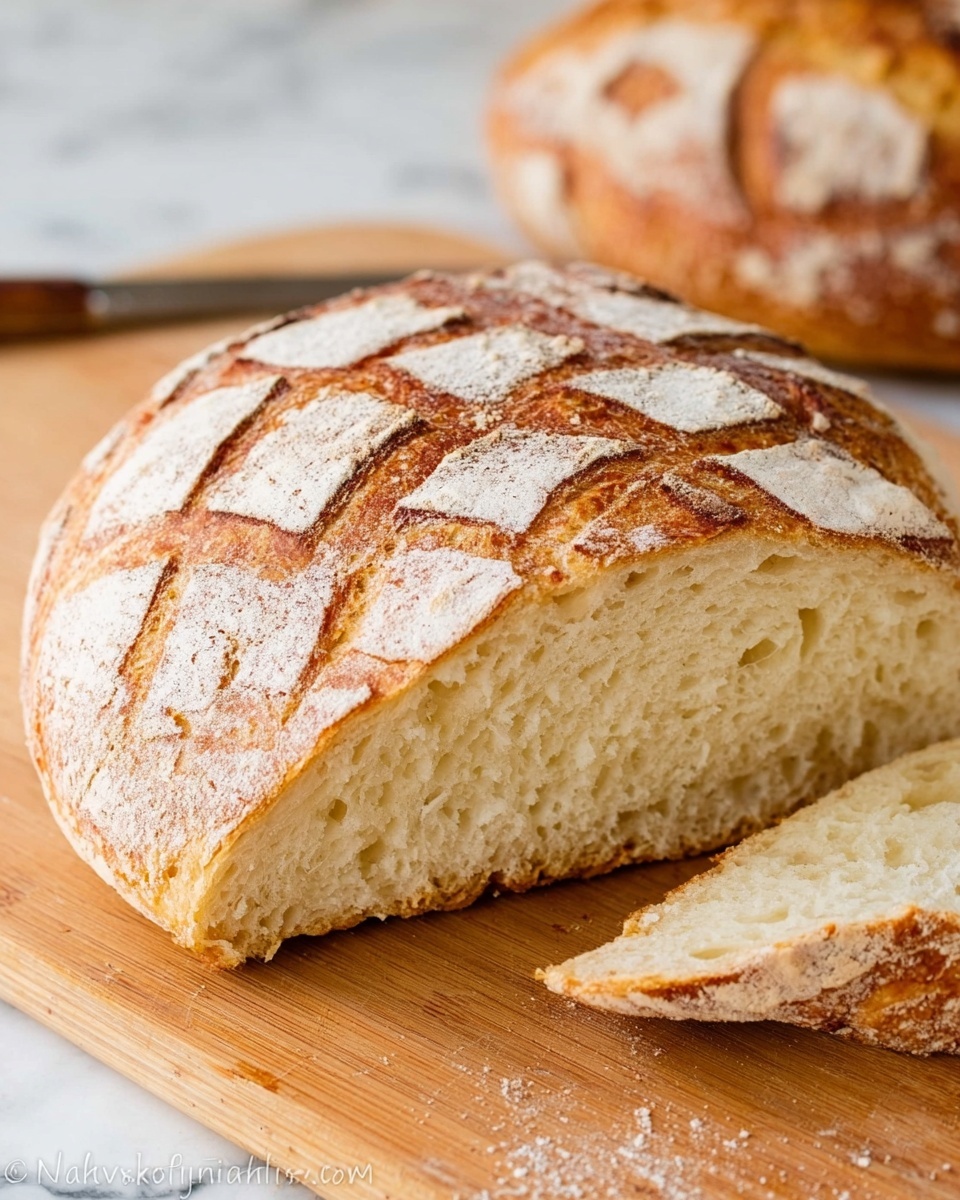
Garnishes
The rustic beauty of this Crusty French Bread Recipe truly shines when paired with simple yet flavorful garnishes. Try spreading high-quality butter infused with fresh herbs or a drizzle of rich olive oil. For something special, a sprinkle of flaky sea salt on warm slices adds a delightful crunch and highlights the bread’s natural flavor.
Side Dishes
This bread is the perfect companion for a variety of dishes. Pair it with hearty stews, warm bowls of soup, or crisp salads. Its crunchy exterior can stand up to thick dips like spinach artichoke or roasted red pepper hummus. For a true French meal, serve alongside a cheese platter with brie, camembert, and aged gruyere.
Creative Ways to Present
Beyond simply slicing, you can elevate presentation by turning this bread into bruschetta or crostini topped with fresh tomatoes, basil, and mozzarella. Hollow out a loaf to create a rustic bread bowl for dips or soups, impressing guests with both taste and style. Wrap slices in parchment paper and tie with twine for charming picnic fare.
Make Ahead and Storage
Storing Leftovers
When you have leftover crusty French bread, store it wrapped loosely in a paper bag or bread box at room temperature for up to two days. Avoid plastic bags as they trap moisture and soften the crust. This way, your bread maintains that perfect crunch and fresh taste longer.
Freezing
To enjoy your Crusty French Bread Recipe even days later, slice the cooled loaf and freeze it in an airtight bag. This preserves freshness and allows you to toast slices directly from the freezer, regaining that delightful crispiness without losing the core softness.
Reheating
For best results, refresh day-old or frozen bread by warming it in a 350˚F oven for 10 to 15 minutes. You can lightly spritz it with water beforehand to restore steam and enhance the crunch. Avoid microwaving as it tends to make bread chewy and tough.
FAQs
Can I use all-purpose flour instead of bread flour?
While bread flour provides higher protein content for better gluten development, you can substitute it with all-purpose flour. The bread will be slightly less chewy and have a less open crumb but will still turn out delicious and crusty.
Why is molasses added to this recipe?
Molasses adds a subtle sweetness and contributes to the beautiful golden-brown color in the crust. It also provides trace minerals that can help activate the yeast more effectively.
What is the purpose of the ice cubes in the cast iron pan?
Adding ice cubes creates steam inside the oven during the first stage of baking. Steam allows the dough to expand fully before the crust hardens, resulting in a light, airy interior and shiny, crackly crust.
How do I know when the bread is fully baked?
Look for a deep golden brown color on the crust and a hollow sound when tapping the bottom of the loaf. Internal temperature should reach about 190˚F when measured with a thermometer.
Can I make this bread without a pizza stone?
Yes! An inverted heavy baking sheet works well to mimic the heat retention of a pizza stone. Just make sure it’s preheated thoroughly to ensure a good crust development.
Final Thoughts
Making your own Crusty French Bread Recipe is such a joyful and rewarding experience that transforms any meal into a special occasion. The gorgeous crust and soft crumb result from simple ingredients and a bit of patience, proving that homemade bread truly is a labor of love. I encourage you to dive in with confidence and treat yourself and loved ones to the warm, irresistible aroma and taste of fresh French bread right from your own oven.
Print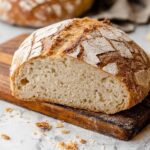
Crusty French Bread Recipe
- Prep Time: 60 minutes
- Cook Time: 340 minutes
- Total Time: 400 minutes
- Yield: 1 loaf (10 slices)
- Category: Bread
- Method: Baking
- Cuisine: French
Description
This Crusty French Bread recipe yields a flavorful, artisan-style loaf with a golden, crispy crust and a soft, airy interior. Using a mixture of bread and all-purpose flour, molasses for subtle sweetness, and a long rise time, this bread develops complex texture and taste. Baked on a pizza stone with steam from ice cubes, this loaf achieves an authentic bakery-quality crust perfect for sandwiches, toast, or as a side for any meal.
Ingredients
Wet Ingredients
- 1 3/4 cups warm water (90˚ to 100˚F)
- 1/2 tsp molasses
Dry Ingredients
- 2 1/3 cups unbleached bread flour (290 grams)
- 2 1/2 cups unbleached all-purpose flour (315 grams)
- 1 1/4 tsp instant yeast (quick rise) (1/2 packet)
- 2 tsp fine sea salt
For Dusting
- All-purpose flour
- Semolina flour (for dusting on baking sheet)
Instructions
- Mix Wet Ingredients: In the bowl of a mixer or by hand, whisk together the warm water and molasses until the molasses is fully dissolved to create a slightly sweet liquid base for the dough.
- Combine Dry Ingredients and Form Dough: In a large glass or plastic bowl, whisk together the bread flour, all-purpose flour, instant yeast, and salt. Add the molasses water mixture to the flour mixture and stir until it forms a single mass of dough. Knead using a dough hook or your hands for about 4 minutes until the dough is soft and sticky but does not stick to clean dry fingertips. If too sticky, add flour one tablespoon at a time.
- First Rise and Folding: Cover the dough loosely with plastic wrap and let it rise at room temperature (69-75˚F) for 4 hours. Every hour, wet your hand to keep it from sticking and punch down the dough, folding it over onto itself several times to develop gluten and texture (a total of 3 folds during this rise).
- Shape and Second Rise: After 4 hours, pull the dough edges to the center, turn the dough over and place it in a large bowl that has been well-floured. Sprinkle the top of the dough with flour, cover with a tea towel, and let it rise for another 1 1/2 hours at room temperature.
- Prepare Oven and Stone: Place a pizza stone or inverted baking sheet in the center rack of your oven and a cast iron pan on the bottom rack. Preheat oven and both items to 500˚F. Do not use glass pans at this temperature for safety.
- Dust, Score, and Bake: Generously sprinkle the back of a baking sheet with semolina flour. Invert the risen dough onto this dusted sheet and score the top several times with a sharp knife. Slide the dough gently onto the preheated pizza stone using a spatula if needed. Quickly add 1 cup of ice cubes into the cast iron pan to create steam (avoid dripping on any glass surfaces).
- Bake with Steam and Finish: Bake at 500˚F for 10 minutes to develop a crispy crust with steam. Then reduce oven temperature to 400˚F and bake for another 30-35 minutes until the crust is golden brown. Turn the oven off, crack open the oven door with a wooden spoon to vent, and leave the bread inside for an additional 10 minutes to finish baking gently.
- Cool and Serve: Remove the bread from the oven onto a wire rack and allow it to cool and rest for at least 15 minutes before slicing to preserve texture and flavor.
Notes
- Use warm water between 90˚ to 100˚F to properly activate the yeast without killing it.
- Molasses adds subtle sweetness and improves crust color.
- Folding the dough during the first rise develops gluten structure for better texture.
- Using a pizza stone and steam from ice cubes helps achieve an authentic crusty exterior.
- Allow the bread to cool fully before slicing to prevent a gummy interior.
- If dough is too sticky when mixing, add flour gradually to avoid over-dense bread.
- Don’t use glass baking dishes at 500˚F as they can crack at high temperatures.


